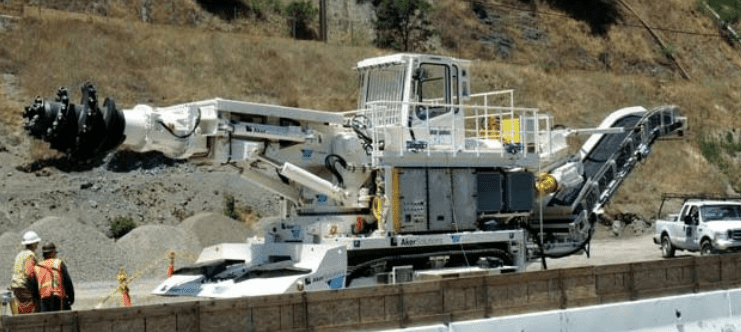
As if tunneling into the East Bay hills wasn’t hard enough, the hint of natural methane in the soil means that crews working on the Caldecott Tunnel can’t use internal combustion engines, cell phones, or even cameras – anything that could make a spark.
These considerations make the Caldecott Tunnel project as much an exercise in geology as an engineering project. Caltrans staff meet daily to discuss the soil conditions and determine the safest technique for the day.
“If you open the rock without taking care, it can explode.” said Gerhard Neuhuber, a Caltrans geologist.
Instead of the regular tunnel boring machine (think Teenage Mutant Ninja Turtles), crews are using the New Austrian Tunneling Method. This method relies on frequent soil analysis over the previous 10-15 feet to choose between different types of digging machinery.
From the the MTC:
Tunneling proceeds using specialized excavation equipment, in this case a roadheader, to carve out a prescribed distance of tunnel before installing an initial structural lining support system, consisting of shotcrete, lattice girders and rock-bolts. Once the excavated cross-section of tunnel is supported, excavation resumes for the next portion of the tunnel.
The roadheader, a large track-mounted machine with a rotating drilling head on the boom, grinds the exposed rock tunnel face, and deposits the cuttings on to a conveyor belt for discharging out of the back of the machine. Cuttings are then hauled out of the tunnel and off site.
In just 3,399 feet, the fourth bore digs through four major faults, three minor faults, and three geologic formations:
- marine shale and sandstone around Sobrante
- chert, shale, and sandstone around Claremont
- non-marine claystone, siltstone, sandstone, and conglomerate around Orinda
